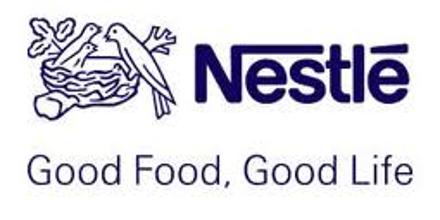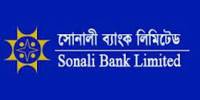Merchandising Development of Nestle Bangladesh Limited
Nestlé is world’s largest health, nutrition and wellness company with a mission of “Good Food, Good Life” which actually drives the company to provide consumers with the best tasting and most nutritious food choices in a wide range of food and beverage categories and eating occasions. Although globally it is twice in size of its nearest FMCG (fast moving consumer goods) competitors, in Bangladesh its journey is comparatively new. Nestlé Bangladesh Limited, a wholly owned subsidiary of Nestlé S.A., started its commercial production in 1994 .Today Nestlé Bangladesh Limited is strongly positioned to grow through its policy of constant innovation and renovation, concentrating on its core competencies and commitment to high quality, with the aim of providing the best quality food to the people of Bangladesh.
Company Profile:
Nestlé – the world’s largest nutrition, health and wellness company, not only in terms of its sales but also in terms of its product range and its geographical presence. Nestlé covers nearly every field of nutrition and food business : infant formula, baby food, milk products, chocolate and confectionery, instant coffee, ice-cream, culinary products, frozen ready-made meals, mineral water etc. Nestlé is also a major producer of pet food. In most of these product groups and in most markets, Nestlé is the leader or at least a strong number two. Nestlé is a much focused Company, with more than 94 percent of the sales coming from the food and beverage sector. Nestlé is present around the globe, on all continents, with around 230,000 people working in more than in 84 countries with 466 factories and with sales representatives in at least another 70 countries. Many of their brand names are familiar to almost everyone:
NESCAFE, NIDO, MAGGI, POLO, MILO, KITKAT, and KOKO KRUNCH.
Some of the products have broken records: 3,000 cups of Nescafe are consumed every second. And Kit Kat merited an entry in the Guinness Book of World Records as the world’s best-selling chocolate bar with 418 Kit Kat fingers eaten every second around the world. In 2011, Nestlé was listed No. 1 in the Fortune Global 500 as the world‟s most profitable corporation. With a market capitalization of US$233 billion, Nestlé ranked No. 9 in the FT Global 500 2013
History of Nestlé:
1866-1905
In the 1860s Henri Nestlé, a pharmacist, developed a food for babies who were unable to breastfeed. His first success was a premature infant who could not tolerate his mother’s milk or any of the usual substitutes. People quickly recognized the value of the new product, after Nestlé’s new formula saved the child’s life, and soon, FarineLactée Henri Nestlé was being sold in much of Europe.
1905-1918
In 1905 Nestlé merged with the Anglo-Swiss Condensed Milk Company. By the early 1900s, the company was operating factories in the United States, Britain, Germany and Spain. World War I created new demand for dairy products in the form of government contracts. By the end of the war, Nestlé’s production had been doubled.
1918-1938
After the war Government contracts dried up and consumers switched back to fresh milk. However, Nestlé’s management responded quickly, streamlining operations and reducing debt. The 1920s saw Nestlé’s first expansion into new products, with chocolate the Company’s second most important activity.
1938-1944
Nestlé felt the effects of World War II immediately. Profits dropped from $20 million in 1938 to $6 million in 1939. Factories were established in developing countries, particularly Latin America. Ironically, the war helped with the introduction of the Company’s newest product, Nescafe, which was a staple drink of the US military. Nestlé’s production and sales rose in the wartime economy.
1944-1975
The end of World War II was the beginning of a dynamic phase for Nestlé. Growth accelerated and companies were acquired. In 1947 came the merger with Maggi seasonings and soups. Crosse & Blackwell followed in 1960, as did Findus (1963), Libby’s (1971) and Stouffer’s (1973). Diversification came with a shareholding in L‟Oreal in 1974.
1975-1981
Nestlé’s growth in the developing world partially offset a slowdown in the Company’s traditional markets. Nestlé made its second venture outside the food industry by acquiring Alcon Laboratories Inc.
1981-1995
Nestlé divested a number of businesses 1980 / 1984. In 1984, Nestlé’s improved bottom line allowed the Company to launch a new round of acquisitions, the most important being American food giant Carnation.
1996-2002
The first half of the 1990s proved to be favorable for Nestlé: trade barriers crumbled and world markets developed into more or less integrated trading areas. Since 1996, there have been acquisitions including San Pellegrino (1997), Spillers Pet foods (1998) and Ralston Purina (2002). There were two major acquisitions in North America, both in 2002: in July, Nestlé merged its U.S. ice cream business into Dreyer’s, and in August, a USD 2.6bn acquisition was announced of Chef America, Inc.
2003 +
The year 2003 started well with the acquisition of Mövenpick Ice Cream, enhancing Nestlé’s position as one of the world market leaders in this product category. In 2006, Jenny Craig and Uncle Toby’s were added to the Nestlé portfolio and 2007 saw Novartis Medical Nutrition, Gerber and Henniez join the Company.
Brands of Nestlé:
The most recognized products of Nestlé all over the world are following.
- Baby foods: Cerelac, Lactogen, NAN, Gerber, Gerber Graduates, Nestum
- Bottled water: Nestlé Pure Life, Perrier, Poland Spring, S.Pellegrino
- Cereals: Chocapic, Cini Minis, Cookie Crisp, Estrelitas, Fitness, Nesquik Cereal
- Chocolate & confectionery: Munch, Aero, Butterfinger, Cailler, Crunch, Kit Kat, Orion, Smarties, Wonka
- Coffee: Nescafé, Nescafé 3in1, Nescafé Cappuccino, Nescafé Classic, Nescafé Decaff, Nescafé Dolce Gusto, Nescafé Gold, Nespresso
- Culinary: chilled and frozen food: Buitoni, Herta, Hot Pockets, Lean Cuisine, Maggi
- Dairy: Carnation, Coffee-Mate, La Laitière, Nido
- Drinks: Nestea, Nestlé Frapé, Juicy Juice, Milo, Nesquik,
- Food service: Chef, Chef-Mate, Maggi, Milo, Minor‟s, Nescafé, Nestea, Sjora, Lean Cuisine, Stouffer’s, Thomy
- Healthcare nutrition: Boost, Nutren Junior, Peptamen, Resource
- Ice cream: Mövenpick, Dreyer‟s, Extrême, Häagen-Dazs,
- Sports nutrition: PowerBar
- Weight management: Jenny Craig
About Nestlé Bangladesh Limited:
Popular Nestlé brands started entering this part of the sub-continent during the British rule and the trend continued during the pre-independence days of Bangladesh. After the independence in 1971, Nestlé World Trade Corporation, the trading wing of Nestlé S.A, sent regular dispatch of Nestlé brands to Bangladesh through an array of indentures and agents and some of the brands such as NESPRAY, CERELAC, LACTOGEN, and BLUE CROSS etc. became some very common products.
Nestlé Bangladesh Limited started its commercial operation in Bangladesh in 1994. Its total authorized capital is TK1.5 billion and total paid up capital is TK 1.1 billion. The only factory of the company in Bangladesh is situated at Sreepur, 55 km north of Dhaka. The factory produces the Maggi noodles, Munch and cereals and repacks milks, soups, beverages and infant nutrition products. Today Nestlé Bangladesh Ltd. is a strongly positioned organization.
The Company is continuously growing through the policy of constant innovation, concentrating on its core competencies and its commitment to high quality food to the people of Bangladesh.
Since the beginning of Nestlé‟s operation in Bangladesh, the chairman of the company has been Mr. Latifur Rahman, one of the top industrialists of the country, his firm Transcom used to import the products of Nestlé. His business house Transcom is still involved in wide range of business like beverage, pharmaceutical, electronics, newspaper, tea export, fast food franchises etc. Still he remains as an honorary chairman of the company although his group Transcom does not capture any share today as Nestlé S.A. holds 100% share of this company.
Purpose of the Study:
South Asia is known for a great emerging market with all big multinational companies trying to establish their dominance in this highly populated region. This report is to analyze the total Merchandising Development area in Dhaka Metro and to know better situation and understand their current position.
Objective of the study:
Broad Objective:
To indicate the actual scenario of field sales of merchandising team, basically what are their work and what are they are came up with. Are they following the NCE (Nestlé Continuous Excellence), are they following the Daily Call Report, etc.
Specific Objective:
- To learn about Nestlé and Nestlé Bangladesh Sales Operations.
- Gather knowledge about the field Sales and also the in house function of a territory as well the distribution point of Nestlé Bangladesh Limited.
- To learn about their total procedure that what they are really done on field and what is the total activities of a distribution point of Nestlé Bangladesh Ltd.
Scope of the Report:
The intention of the study is to understand analyze the actual field sales of Nestlé Bangladesh to allow me to relate theoretical knowledge to practical applications in fields that learn me to know that in reality how does a company run through and at the same time get an idea on the Sales Department of Sales Operation of Nestlé Bangladesh in order to get a short idea how it works in other section too.
Research Methodology:
The total analysis of Dhaka metro field sales (six territories out of twelve) can relate with one another as because it is under the operations of Sales, and for that the region is divided into two sections. Those are, Dhaka South and Dhaka North, and the head (RSM- Regional Sales Manager) of them are run by those region. Under them there are three ASM (Area Sales manager) and one ASE (Area Sales Executive), and finally comes the twelve TO (Territory Officers) of those twelve territories. As I am focusing on Merchandising Development project, so, no other than field is the only option for collecting the dada. And then I made up an itenary with my entire companion and match up with the merchandiser to track them in every step and every outlet.
Sources of Data Collection:
Primary data was collected from meeting and conversation with Nestlé employees as well as from learning experience while working as an intern.
Most of necessary information was collected from secondary sources. Secondary data has been gathered through the intranet of Nestlé Bangladesh Limited, internet and mainly from the field. Data is collected from the field analysis of the Dhaka Metro.
About Departments
Sales
Winning attitude is the key strength of Sales function in Nestlé Bangladesh limited. Our motto of Growth Unlimited‟ will be the pillar in achieving our objectives, provided we are open and willing to embrace changes with an ability to redeploy our resources and assets for driving efficiencies.
The fundamentals of the sales challenge are the ability to differentiate our demand generating activities through channel & category development strategies. We are one of the leading organization in FMCG to address channel wise business solutions and working with shoppers insights.
Nutrition
Nestlé Nutrition encompasses popular brands and products of infant nutrition and baby food. Working in Nestlé Nutrition means, with every minute of working you know you are putting a smile on someone‟s face. The products, the brand personalities as well as the market itself pose daunting challenge as well as immense learning opportunity. At Nestlé Nutrition, we work closely with Healthcare Professionals for Brand Building and Brand Communication.
- Constant Innovation and Renovation of brands
- Superior products
- Zero tolerance in case of maintaining quality
- Strong brand and nutrition awareness communication with the help of scientific information and Healthcare professionals.
- Management of Key stakeholders and opinion leaders Managing Business Channels
- Managing availability and distribution
Manufacturing
In Bangladesh, Nestlé started its operation in 1998 and its factory is situated in Sreepur, Gazipur. Nestlé Bangladesh directly employs 462 people and more than 1000 people are employed by suppliers and distributors in connection to Nestlé. Our products in Bangladesh are Nido, Nescafé, Maggi noodles and soup, breakfast Cereals, Coffee-Mate and Fox‟s crystal candy.
Nestlé is present around the globe, on all continents, with around 230,000 people working in more in an 84 countries with 466 factories and with sales representatives in at least another 70 countries. Nestlé is the world’s largest food group, not only in terms of its sales but also in terms of its product range and its geographical presence. Nestlé covers nearly every field of nutrition: infant formula, milk products, chocolate and confectionery, instant coffee, ice-cream, culinary products, frozen ready-made meals, mineral water etc.
Supply Chain
Nestlé Supply Chain operates with a mission of driving sound business decision making and innovation planning to optimize Group long-term profitable growth, cash flow and total return to shareholders. Here, we embrace the role of change agents, drive long term value creation and ensure the highest standards for stewardship and governance throughout the company.
The strength of our contribution is wholly dependent on our people. Outstanding people are hired, developed and retained with integrity. We as a team nurture their development and actively help them develop the business skills and experiences they need to fulfill our mission and objectives. We set high standards, embrace change, operate discipline and take personal risk, as appropriate, to ensure that decisions are taken in the best long term interest of the shareholders and key stake holders.
Finance & Control
Nestlé Finance operates with a mission of driving sound business decision making and innovation planning to optimize Group long-term profitable growth, cash flow and total return to shareholders. Here, we embrace the role of change agents, drive long term value creation and ensure the highest standards for stewardship and governance throughout the company.
The strength of our contribution is wholly dependent on our people. Outstanding people are hired, developed and retained with integrity. We as a team nurture their development and actively help them develop the business skills and experiences they need to fulfill our mission and objectives. We set high standards, embrace change, operate discipline and take personal risk, as appropriate, to ensure that decisions are taken in the best long term interest of the shareholders and key stake holders.
Human Resources
Being the largest Food and Wellness Company, Nestlé has more than 280,000 people working with it worldwide. Globally standardized operational procedures, international working environment, global attachment programs, globally shared culture, structured development and evaluation framework and extensive training programs have made Nestlé one of the leading and preferred employers worldwide. Nestlé produces wide range of food and nutrition products for all the age groups of customers. It is very important to us that we add value and make customers lives healthier.
Nestlé Bangladesh employs nearly 450 people and many more with indirect contracts with its own factory in Sreepur, Gazipur. We consider our manpower to be our best asset and prefer people to work with enthusiasm, wit and efficiency to enhance productivity and sustainable growth to the organization.
Human Resources function offers different areas to explore your career with, including Recruitment & Selection, Learning & Training, Reward management, People Development and Administration to ensure smooth operation as a whole. Nestlé believes in participative management structure, a flat organizational framework.
Corporate Affairs & External Relations
Nestle Finance operates with a mission of driving sound business decision making and innovation planning to optimize Group long-term profitable growth, cash flow and total return to shareholders. Here, we embrace the role of change agents, drive long term value creation and ensure the highest standards for stewardship and governance throughout the company.
The strength of our contribution is wholly dependent on our people. Outstanding people are hired, developed and retained with integrity. We as a team nurture their development and actively help them develop the business skills and experiences they need to fulfill our mission and objectives. We set high standards, embrace change, operate discipline and take personal risk, as appropriate, to ensure that decisions are taken in the best long term interest of the shareholders and key stake holders.
The strength of our contribution is wholly dependent on our people. Outstanding people are hired, developed and retained with integrity. We as a team nurture their development and actively help them develop the business skills and experiences they need to fulfill our mission and objectives. We set high standards, embrace change, operate discipline and take personal risk, as appropriate, to ensure that decisions are taken in the best long term interest of the shareholders and key stake holders.
In Call Execution in Nestle Way (8 Rules)
- Pre-call Preparation
- Greet Customers
- Outlets Check
- Established Customer Needs
- Sell the Call Objective
- Merchandising/ Accomplish AVA (Availability, Visibility and Accessibility)
- Administrative
- Post Call Review
The bulk of an analyst‟s time is spent in gathering data. A detailed plan as to who is to be interviewed by whom, the questions to be asked, the time and place of contact, and so on, have to be carefully prepared so that analyst‟s time and cost are kept to a minimum. Daily reports of the interviews are to be written up and reviewed so that the individual or team can spot new areas requiring exploration while data is still being gathered. The marketing analysis will be developing tentative conclusions as the data comes in. It is a sound procedure for her to meet once or twice with the Territory officer before the data collection ends to outline some initial findings to see what reactions and suggestions they produce. When the data-gathering phase is over, the marketing analyst prepares notes for a visual and verbal presentation to the Territory officer or Area sales manager who hired him or her. The presentation consists of restating the objectives, showing the main findings, and presenting the major recommendations. Then the analyst is ready to write the final report, which is largely a matter of putting the visual and verbal material into a good written communication. The company territory officer(s) will usually ask the analyst to present the report to marketing department and Administration as well as globally. The most valuable part of the marketing analysis often lies not so much in the analyst‟s specific recommendations but in the process that managers begin to go through to assimilate, debate, and develop their own concept of the needed marketing action.
When they enter into some store they need to memories and practice all the stuffs that one of would not to be missed. It is basically for the DSR (Distributor Sales Representative) but for Merchandiser it also needed.
For them there are also some ground rules to apply, which are called Nine Merchandising Rules.
Nine Merchandising Rules
- Eye Level Display
- Block Display
- Layout Display
- Hot Spot Display
- Upright Upfront Display
- FEFO base Display
- Proper Stock Display
- Benchmarking Display
- Proper Maintenance of Secondary Display Unit
How they done their work is to work on exact rule that what is written upward. The display must be on eye level. Then the block has to be perfect in wards. Then have to follow the sequence what came after what and have to check that the display is on perfect position or not, basically it is for the shoppers because when shopper came onto a store and look at a glance for product that it is on hot spot or not that has to be checked by the merchandiser. If it does not then have to inform the distributor sales representative (DSR) for sorting this out and tell him for putting it on the right place. Then they have to check that the product is on front facing or not. Then they follow the FEFO base display which is basically “First Expiry First Out” fundamentally if one shop has a product which is short dated then that product have to have place on first so that the product might not be expired and put up for sale on time. Afterward it comes in proper stock display, which is basically filling the box out with the product that where there would be no space there. Then benchmarking display, it is mainly competing with the competitors that in what percentage the presence of our product it competes with the competitors. Then finally came up with the proper maintenance of secondary display unit which is outer stock of the display.
Recommendation:
There is not much one can recommend about these top companies. Their success is related to the company business. This success would not have been possible without excellent strategy in all the sectors of the territory. Then again I personally feel the following recommendation if performed will help improve their situation further.
- Territory Officers needs to be more focus on the merchandiser call report.
- Territory Officers needs to be more focus on the market return control that how merchandisers note it down on the following sheet.
- Merchandiser should be given proper training after their recruitment, and only after proper training should they be sent out to the field.
- Since the NCE (Nestle Continuous Excellence) board is a global initiatives which has been taken by the Nestle, so, merchandiser should be taught that how to calculate and fulfill their part of NCE board.
- The territory officer or the manager should sit with them at least once in a week to give them the proper encouragement and also communicate with the company guideline and goals.
- Currently there is no KPI system for the merchandiser to evaluate them. There might be a list of KPI should be set for the merchandiser so that their performance can be measured, as these will lead them to work more focus.
- One of the main reasons behind this about their salary which very much low, and it is unimaginable for anybody for living in Dhaka city as well. It may helpful to encourage them on work if the salary range is increase for them.
- Somebody needs to check that, whether they are prepare for the route and there must have a proper planning before going to the route.
- About the critical outlet, manager or territory officer should help for merchandising further to go smoothly.
- They needs to be more specific on motivating the merchandiser as because it‟s a field base job and has to work on street to street at least for 4-5 hours. If they do then surely the merchandisers would happily own their job on field basis.
Conclusion
“Good Food, Good Life” captures the very essence of Nestlé and the promises they commit to themselves every day, everywhere as the leading nutrition, health and wellness company. The main objective of this report was to show analysis of the merchandising development project that how every territory execute. This is one of the roots of the company, and proper work may be seen better future of that company. Negligence is the main reason behind this for not going up in this sector. For an example, when we are going to buy something we always do check and re check after buy, so, for this type of job check and re-check is necessary. As the company grew much faster than in recent year then obviously some credits also goes to the merchandiser who handle the company root and becomes the root. If the root didn‟t get any water and necessary items then the tree will not grow up and one day will die due to this, therefore, as we are talking about merchandiser they need something like this which they could feel good and for that they might own their job as well.
As for Nestlé Bangladesh, this company grew significantly during last couple of years. It produces the biggest brand of the country, Maggi noodles and Nutrition Product as we all known about the baby foods. Increasing demand of products is helping the company remain strong. The changing lifestyle and concepts have contributing much to the growth of the company.
















